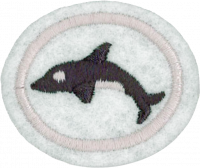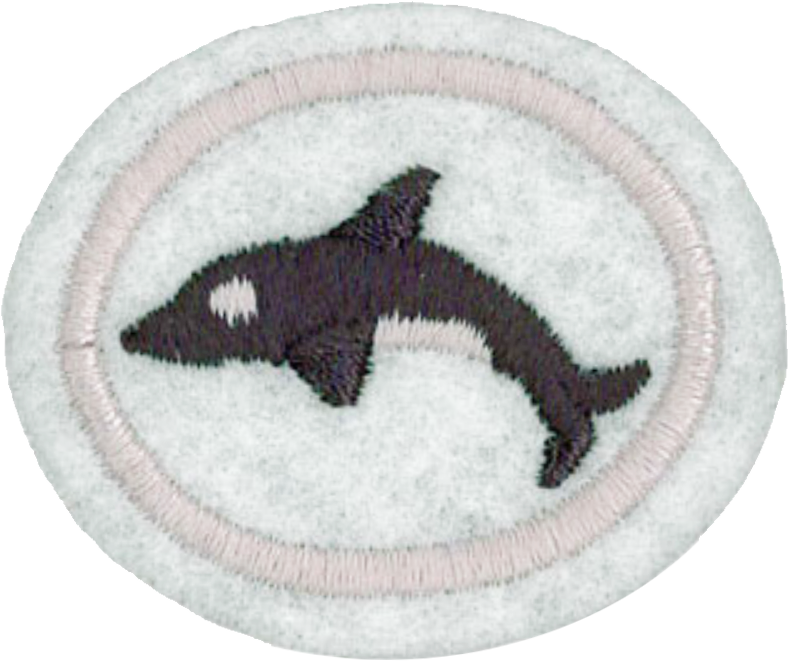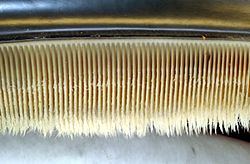Difference between revisions of "AY Honors/Marine Mammals/Answer Key/es"
(Created page with "{{clear}}") |
(Created page with "</noinclude>") |
||
| Line 163: | Line 163: | ||
{{CloseReq}} <!-- 5 --> | {{CloseReq}} <!-- 5 --> | ||
{{ansreq|page={{#titleparts:{{PAGENAME}}|2|1}}|num=6}} | {{ansreq|page={{#titleparts:{{PAGENAME}}|2|1}}|num=6}} | ||
| − | <noinclude> | + | <noinclude></noinclude> |
| − | </noinclude> | + | <!-- 6. ¿Cuál es el propósito de la grasa de ballena? --> |
| − | <!-- 6. | ||
| − | |||
| − | |||
| − | + | {{clear}} | |
| − | |||
| − | |||
| − | + | <noinclude></noinclude> | |
| − | <noinclude | ||
| − | |||
{{CloseReq}} <!-- 6 --> | {{CloseReq}} <!-- 6 --> | ||
{{ansreq|page={{#titleparts:{{PAGENAME}}|2|1}}|num=7}} | {{ansreq|page={{#titleparts:{{PAGENAME}}|2|1}}|num=7}} | ||
| − | <noinclude> | + | <noinclude></noinclude> |
| − | </noinclude> | + | <!-- 7. Conocer dos razones por qué las focas son cazadas. --> |
| − | <!-- 7. | ||
| − | |||
| − | |||
| − | + | <noinclude></noinclude> | |
| − | <noinclude | ||
| − | |||
{{CloseReq}} <!-- 7 --> | {{CloseReq}} <!-- 7 --> | ||
{{ansreq|page={{#titleparts:{{PAGENAME}}|2|1}}|num=8}} | {{ansreq|page={{#titleparts:{{PAGENAME}}|2|1}}|num=8}} | ||
| − | <noinclude> | + | <noinclude></noinclude> |
| − | </noinclude> | + | <!-- 8. Describir por qué las focas y los delfines pueden moverse con tana rapidez en el agua. --> |
| − | <!-- 8. | ||
| − | |||
| − | |||
| − | + | <noinclude></noinclude> | |
| − | <noinclude | ||
| − | |||
{{CloseReq}} <!-- 8 --> | {{CloseReq}} <!-- 8 --> | ||
{{ansreq|page={{#titleparts:{{PAGENAME}}|2|1}}|num=9}} | {{ansreq|page={{#titleparts:{{PAGENAME}}|2|1}}|num=9}} | ||
| − | <noinclude> | + | <noinclude></noinclude> |
| − | </noinclude> | + | <!-- 9. Realizar una de las siguientes actividades: --> |
| − | <!-- 9. | + | <noinclude></noinclude> |
| − | <noinclude | ||
| − | |||
{{ansreq|page={{#titleparts:{{PAGENAME}}|2|1}}|num=9a}} | {{ansreq|page={{#titleparts:{{PAGENAME}}|2|1}}|num=9a}} | ||
| − | <noinclude> | + | <noinclude></noinclude> |
| − | </noinclude | ||
| − | |||
| − | |||
| − | + | {{AY Honors/Zoo Visit/es}} | |
| − | {{AY Honors/Zoo Visit}} | ||
| − | |||
| − | + | <noinclude></noinclude> | |
| − | <noinclude | ||
| − | |||
{{CloseReq}} <!-- 9a --> | {{CloseReq}} <!-- 9a --> | ||
{{ansreq|page={{#titleparts:{{PAGENAME}}|2|1}}|num=9b}} <!--T:39--> | {{ansreq|page={{#titleparts:{{PAGENAME}}|2|1}}|num=9b}} <!--T:39--> | ||
| − | <noinclude> | + | <noinclude></noinclude> |
| − | </noinclude | ||
| − | |||
| − | |||
| − | |||
| − | |||
| − | |||
| − | |||
| − | |||
| − | |||
| − | |||
| − | + | <noinclude></noinclude> | |
| − | <noinclude | ||
| − | |||
{{CloseReq}} <!-- 9b --> | {{CloseReq}} <!-- 9b --> | ||
{{ansreq|page={{#titleparts:{{PAGENAME}}|2|1}}|num=9c}} <!--T:40--> | {{ansreq|page={{#titleparts:{{PAGENAME}}|2|1}}|num=9c}} <!--T:40--> | ||
| − | <noinclude> | + | <noinclude></noinclude> |
| − | </noinclude | ||
| − | |||
| − | |||
| − | |||
| − | |||
| − | |||
| − | + | <noinclude></noinclude> | |
| − | <noinclude | ||
| − | |||
{{CloseReq}} <!-- 9c --> | {{CloseReq}} <!-- 9c --> | ||
{{CloseReq}} <!-- 9 --> | {{CloseReq}} <!-- 9 --> | ||
| − | <noinclude> | + | <noinclude></noinclude> |
| − | </noinclude> | + | ==Referencias== |
| − | == | + | [[Category:Adventist Youth Honors Answer Book/es]] |
| − | + | <noinclude></noinclude> | |
| − | |||
| − | [[Category:Adventist Youth Honors Answer Book/ | ||
| − | <noinclude | ||
| − | |||
{{CloseHonorPage}} | {{CloseHonorPage}} | ||
Revision as of 04:20, 18 April 2021
Nivel de destreza
2
Año
1991
Version
27.12.2025
Autoridad de aprobación
Asociación General
1
1a
Adventist Youth Honors Answer Book/Species Account/Delphinapterus leucas/es
Adventist Youth Honors Answer Book/Species Account/Monodon monoceros/es
Adventist Youth Honors Answer Book/Species Account/Physeter macrocephalus/es
Adventist Youth Honors Answer Book/Species Account/Kogia breviceps/es
Adventist Youth Honors Answer Book/Species Account/Berardius/es
Adventist Youth Honors Answer Book/Species Account/Hyperoodon/es
Adventist Youth Honors Answer Book/Species Account/Ziphius cavirostris/es
1b
Adventist Youth Honors Answer Book/Species Account/Balaenoptera musculus/es
Adventist Youth Honors Answer Book/Species Account/Balaena mysticetus/es
Adventist Youth Honors Answer Book/Species Account/Megaptera novaeangliae/es
Adventist Youth Honors Answer Book/Species Account/Eschrichtius robustus/esAdventist Youth Honors Answer Book/Species Account/Caperea marginata/es
1c
Adventist Youth Honors Answer Book/Species Account/Monachus schauinslandi/es Adventist Youth Honors Answer Book/Species Account/Mirounga/es Adventist Youth Honors Answer Book/Species Account/Hydrurga leptonyx/es Adventist Youth Honors Answer Book/Species Account/Halichoerus grypus/es
1d
1e
Adventist Youth Honors Answer Book/Species Account/Orcinus orca/es
Adventist Youth Honors Answer Book/Species Account/Tursiops truncatus/es
Adventist Youth Honors Answer Book/Species Account/Delphinus delphis/es
Adventist Youth Honors Answer Book/Species Account/Neophocaena phocaenoides/es
Adventist Youth Honors Answer Book/Species Account/Phocoena phocaena/es
1f
1g
1h
Adventist Youth Honors Answer Book/Species Account/Trichechus inunguis/es Adventist Youth Honors Answer Book/Species Account/Trichechus manatus/es Adventist Youth Honors Answer Book/Species Account/Trichechus senegalensis/es
2
3
4
4a
4b
4c
4d
Baleen makes up baleen plates, which are arranged in two parallel rows that look like combs of thick hair; they are attached to the upper jaws of baleen whales. Whales use these combs for filter feeding. Baleen whales scoop vast amounts of water into their mouths, and then push the water back out their mouths through the baleen plates. The baleen plates prevent fish and plankton from flowing out of their mouths. Whales are the only vertebrate group to use this method of feeding in great abundance (flamingos and crabeater seals use similar methods, but do not have baleen), and it has allowed them to grow to immense sizes.
4e
4f
4g
5
6
7
8
9
9a
9b
9c



